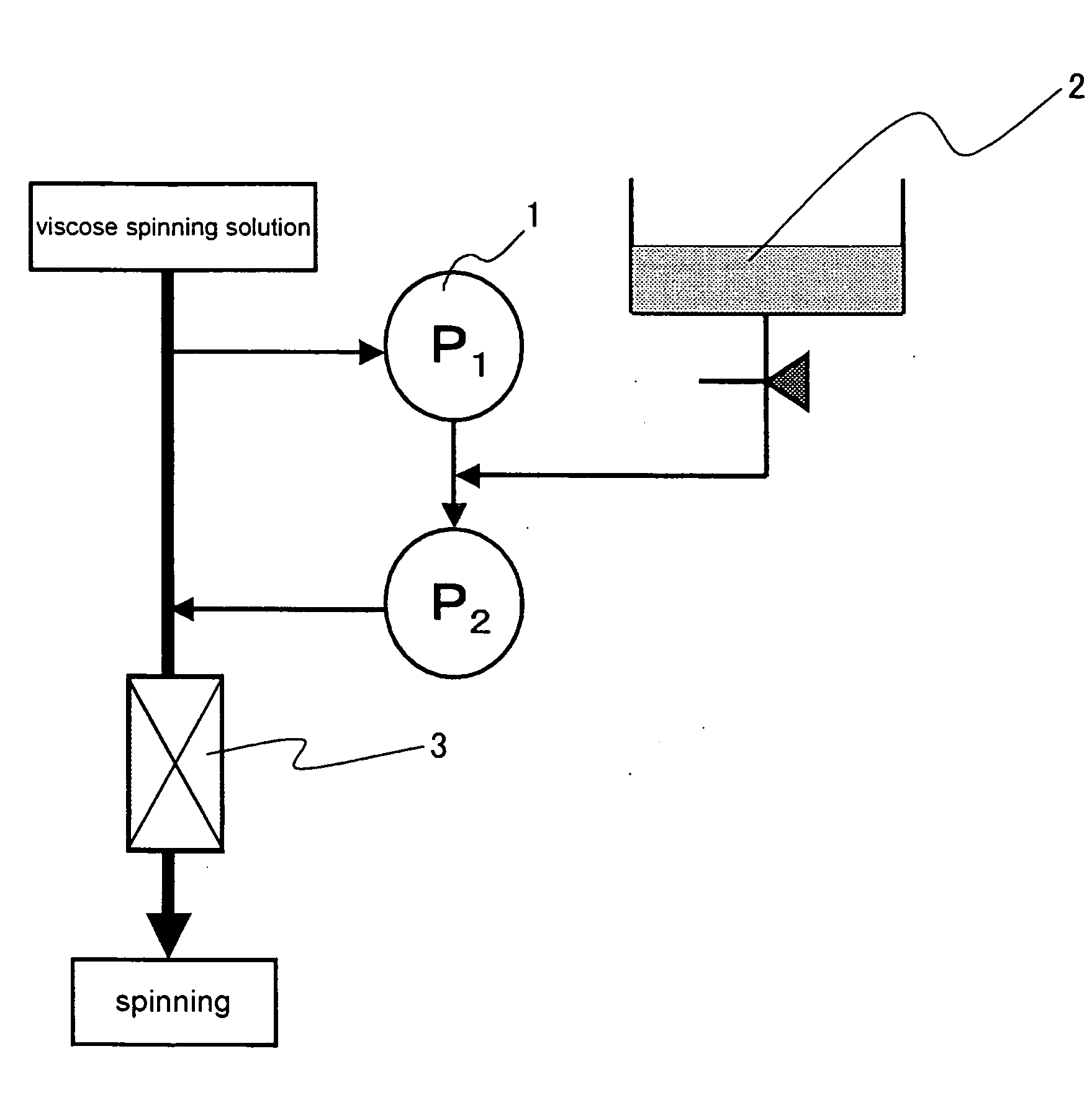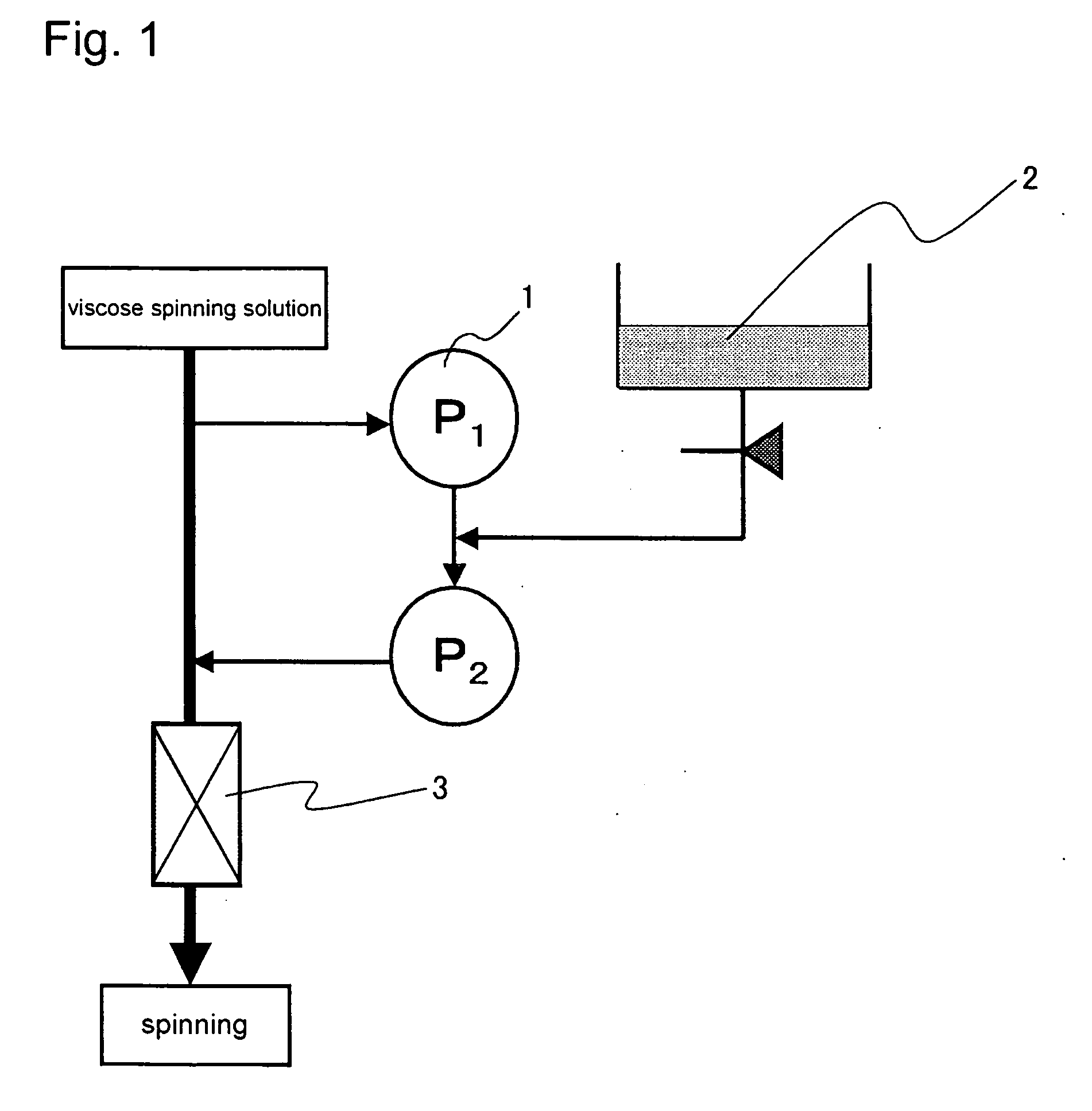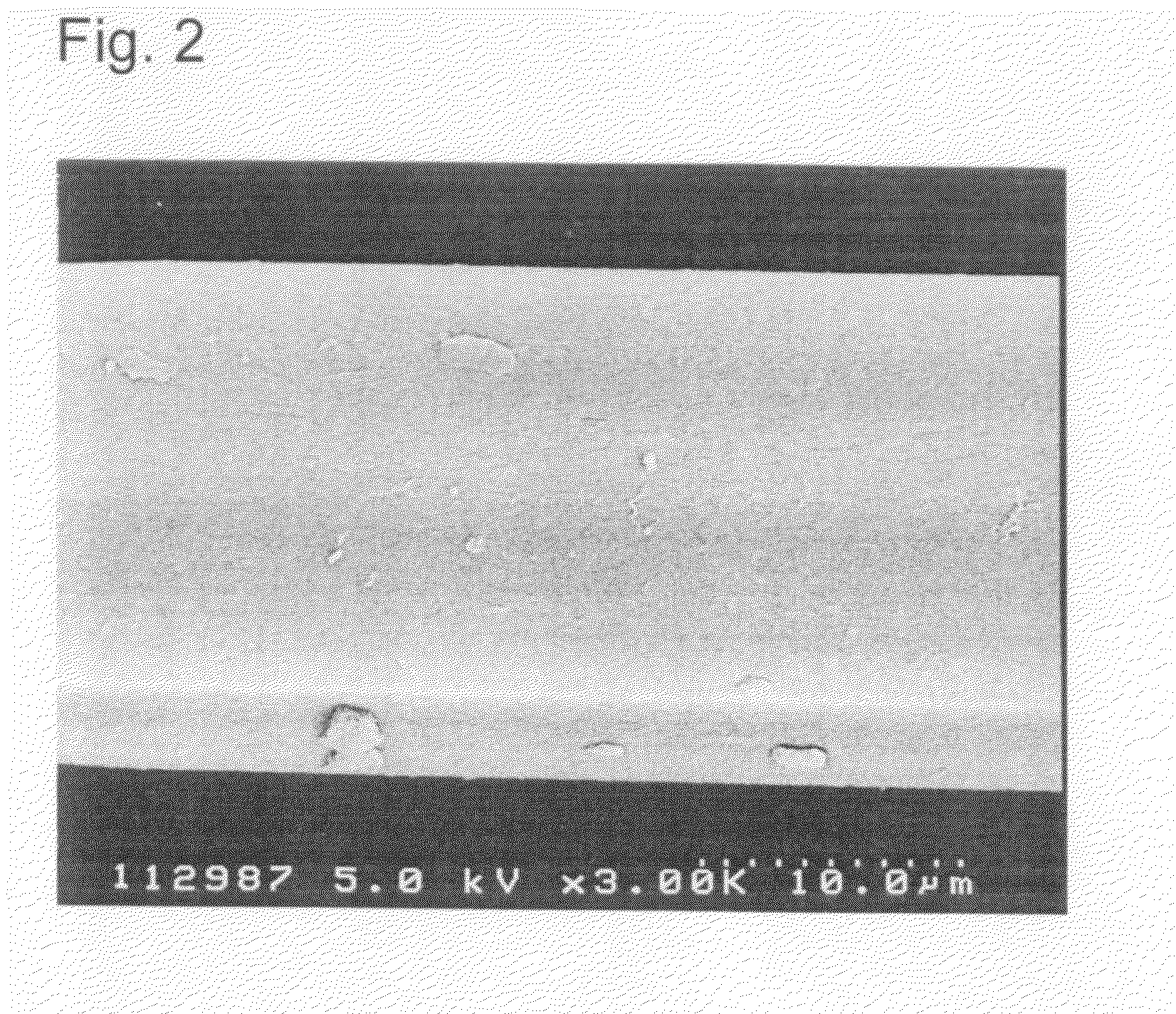Method of Manufacturing Cellulose/Gelatin Composite Viscose Rayon Filament
a technology of viscose rayon filament and cellulose, which is applied in the direction of viscose artificial filaments, monocomponent protein artificial filaments, textiles and paper, etc., can solve the problems of insufficient dissolution of casein itself, difficult to carry out a practical production in a uniform, stable manner, and spinning process, and achieve uniform strength and elongation
- Summary
- Abstract
- Description
- Claims
- Application Information
AI Technical Summary
Benefits of technology
Problems solved by technology
Method used
Image
Examples
example 1
[0039]Gelatin was extracted through a conventionally-used method by using bovine bones as materials (immersed in 4% hydrochloric acid for two days, washed with water, immersed in lime water of pH 12.5 for 20 days, washed by water, hot water poured therein, and extracted through a batch method). This was purified through a conventionally-used method (the extracted gelatin was filtered through a cotton filter, and impurities such as metal ions were removed therefrom by using an ion exchange resin).
[0040]Proteolytic enzyme (serine protease) was allowed to react with the gelatin thus extracted and purified to be hydrolyzed, and various hydrolyzed gelatins were produced while changing the processing time while monitoring the gel strength in accordance with JIS K6503. The respective gelatin solutions were condensed and deactivated by using an aqueous solution of hydrogen peroxide. The resulting various gelatin solutions were heated at 110° C., and moisture was evaporated for 5 hours so th...
example 2
[0043]A gelatin solution of No. A prepared in example 1 (20 Kg) was loaded into hot water (20 Kg) temperature-adjusted to 45° C., and stirred to obtain a gelatin dissolved solution. To the gelatin dissolved solution was added 50% sodium hydroxide to adjust pH to 10. After having confirmed that an uniform solution was prepared, a water-soluble polyfunctional aliphatic epoxy compound (Denacol EX851 (made by Nagase Chemtex Corporation))(2 Kg) was put into the solution in 30 minutes, and this was stirred for 3 hours. The temperature adjustment was stopped, and the solution was gradually cooled. A gelatin crosslinked solution A containing 19% by weight of gelatin was obtained.
example 3
[0044]The same processes as those of example 2 were carried out except that a gelatin solution of No. B prepared in example 1 was used so that a gelatin crosslinked solution B containing about 19% by weight of gelatin was obtained.
PUM
| Property | Measurement | Unit |
|---|---|---|
| time | aaaaa | aaaaa |
| temperature | aaaaa | aaaaa |
| temperature | aaaaa | aaaaa |
Abstract
Description
Claims
Application Information
 Login to View More
Login to View More - R&D
- Intellectual Property
- Life Sciences
- Materials
- Tech Scout
- Unparalleled Data Quality
- Higher Quality Content
- 60% Fewer Hallucinations
Browse by: Latest US Patents, China's latest patents, Technical Efficacy Thesaurus, Application Domain, Technology Topic, Popular Technical Reports.
© 2025 PatSnap. All rights reserved.Legal|Privacy policy|Modern Slavery Act Transparency Statement|Sitemap|About US| Contact US: help@patsnap.com



